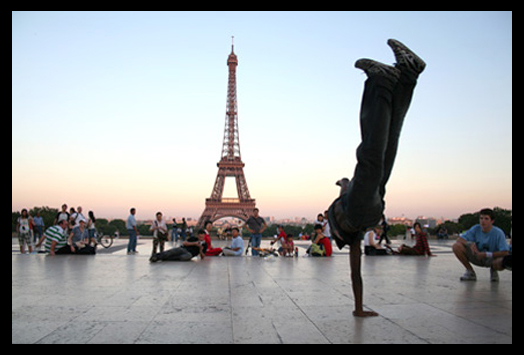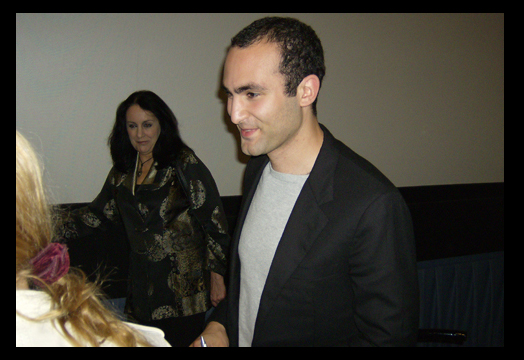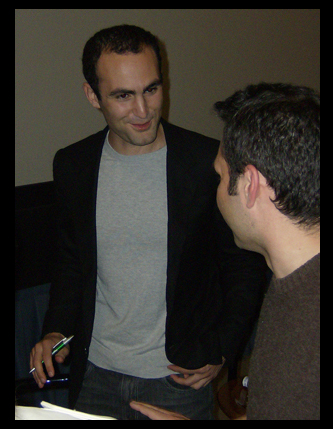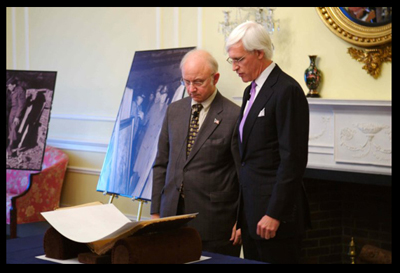Directing and real-life duo Andrea Nix and Sean Fine sat down with us to answer a few questions about their upcoming film WAR/DANCE. This powerful documentary about refugee children in Uganda is already generating Oscar buzz, and opens tomorrow, 11/9 @ the Angelika New York. Don’t miss it!
Tell us a bit about War/Dance in your own words. What do you think will attract audiences to the film?
We hope you fall as hard for the kids in War/Dance as we did. Itâ??s been a labor of love for us. If you know nothing about the war in northern Uganda, let us take you inside the lives of three kids who have been greatly affected, in their own words. To us this film is a really about a journey and at the end of the film, youâ??ll realize that this is not as much a film about war as it is about the resilience that gets them through it all. . If you love powerful cinematography, this is a very cinematic experience, if you love stories about the triumph of the human spirit you will really love this film, if you like films that take you into worlds you would otherwise never experience, this film will drawn you in, but we also predict that at the end you will feel a connection and familiarity to three kids that walking in, you would think you would have nothing in common with. We hope that whatever draws you to the movie theatre, you will be impacted by this movie and encourage others to see it (and since a portion of the proceeds go back to the kids, your helping just by buying a ticket).
You both have production, writing and other filmmaking experience behind you, but made your directorial debuts with War/Dance and later won the directing award at Sundance. How did that feel?
We have produced and directed for broadcast for the last ten years, but never made something for the theatre, so our first screening at Sundance was our first public screening of the film, and the first time we sat with an audience and watched something we have made. Itâ??s an overwhelming experience to watch an entire theatre full of people all intently watching the story you have been putting together for the last year and a half. We were actually quite emotional and a little terrified, but when they gave a standing ovation after the epilogue updated where the kids are now, we realized that the audience connected with the kids and we had done our jobs. The award was unexpected and we were quite moved to receive it.
What about directing challenged or surprised you?
There are a lot of challenges when trying to make a film like this. On the one hand you have the danger element of filming in a war zone with a three to four person crewâ??unmonitored ever-present rebel activity ranging from abduction to bloody ambushes. And when you also add the health risk of living in one of the most cut off refugee camps in Ugandaâ??a place where were overcrowding has led to dysentery, cholera and malaria that take a 1,000 lives per week. And on the other hand we faced the challenge of telling the story of the effects of war on children in an entirely new way. We decided that to make the most impact we wanted to tell a story through the childrenâ??s eyes, neither adult, nor narrator would interpret the kids experiences, just the kids own voices, in their own language. To achieve the level of intimacy needed, we decided to live in the camp during the entire production, which went against military law in northern Uganda. We had to live in Patongo displacement camp so the people, and more importantly, the children in the film could get to know us. We wanted the children to feel comfortable with us and safe. To make the childrenâ??s stories the most powerful we wanted a very direct line of communication between the children and the audienceâ??from interviews where the kids are looking directly into the lens to having the camera only feet away during some of their most emotional moments. We wanted the film to touch people, to bridge the distance between the audience and our characters, people they initially think they have nothing in common with. To us human connection is the most powerful tool to evoke change.
The biggest surprise was probably how effective these kids were at telling their own story. We took a risk when we adopted this approach since we werenâ??t sure if they would be articulate enough to convey their story. Only when we returned home and did the full word for word translation were we fully blown away on the power of their stories and the courage it took to share them.
There is so much horror going on all over Africa currently, what with the Darfur genocide, the AIDS epidemic, and numerous civil wars. What led you to zero in on the children of Uganda?
Frankly the shock about knowing nothing about it. When you donâ??t know about a twenty year war thatâ??s devoured 30,000 kids abducted as child soldiers, thereâ??s something wrong. And we wanted to try to give a voice to kids that the most of the world would never have heard from.
You lived in one of the childrenâ??s refugee camps during the making of War/Dance. What was that experience like?
There was no way to make this film without living in the camp but that being said, northern Uganda is a very dangerous place to shoot. You are constantly under the threat of attack from rebels you will never see, and during filming, kids were abducted and vehicles ambushed a few times in and around the camp. The rebel presence, disease and lack of electricity put personal and technical stress on this kind of production but the thought that always balanced out this experience was that, unlike the people who live in these camps, the crew got to home.
Much of the buzz around War/Dance focuses on how you highlight the indestructible power of the childrenâ??s spirits. Were you surprised by how much hope these children of war are able to maintain?
Yes, these kids are such survivors that it really moved us that they were not surviving by emotionally shutting down, but by connecting to the music and dance that had always had great meaning to their tribe.
War/Dance is being released at a time when several other pertinent documentaries about African turmoil are also making the rounds, including Darfur Now and Angels in the Dust. Do you think the trend will have a political impact and help to end some of the continentâ??s turbulence?
Yes, or else we wouldnâ??t have made this film. We have trust in peopleâ??s reactions to basic injustice and the fortune that we live in a country that has the means and influence to actually DO something about ending conflicts that inflict such trauma.
What do you most want audiences to take from the War/Dance?
Leaving the theatre we hope you canâ??t stop thinking about these kids and want to spread the word to others since tickets sales help the kids in the film and others like them.





